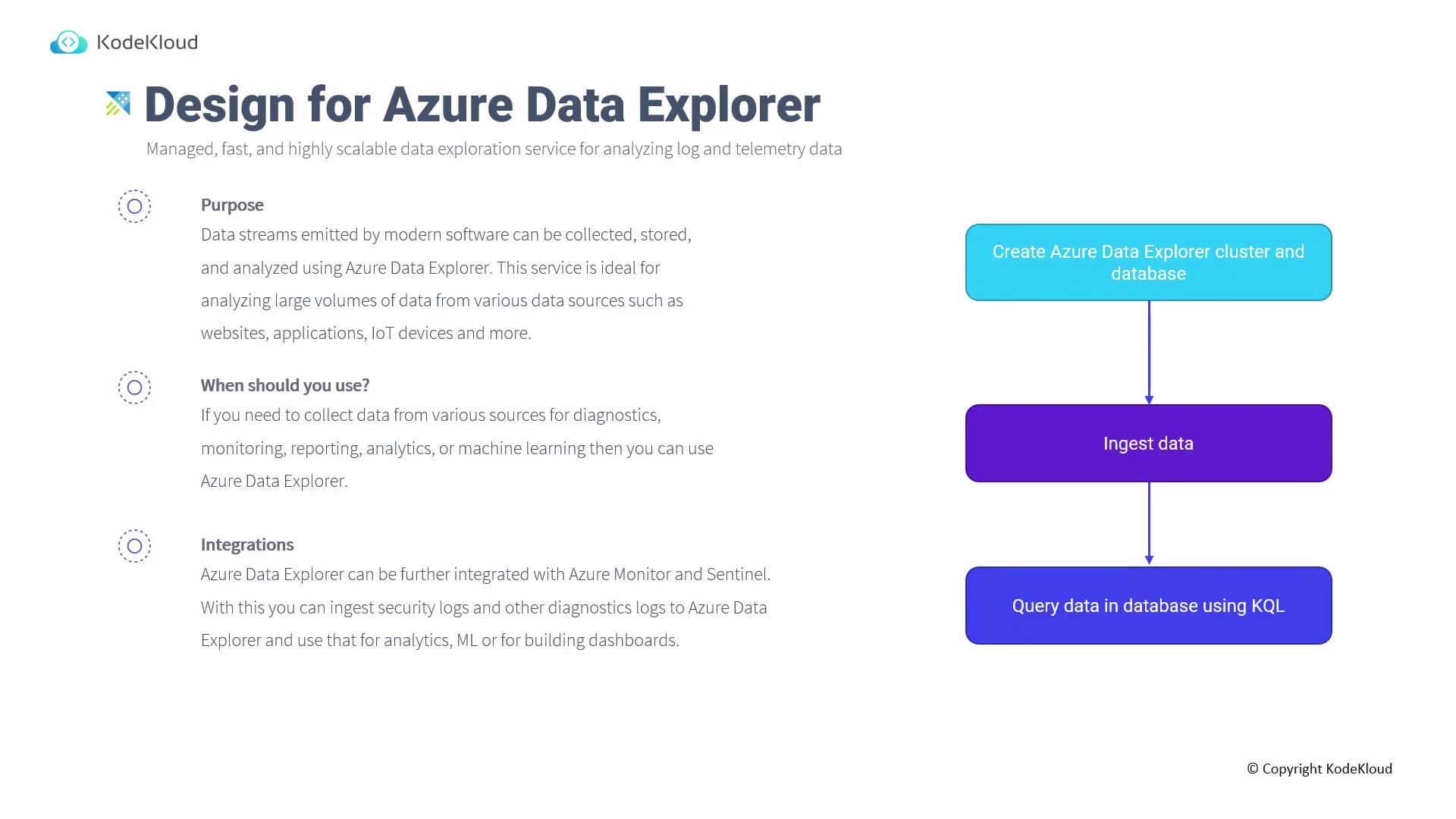AZ-305: Microsoft Azure Solutions Architect Expert
Design a logging and monitoring solution
Design for Azure Data Explorer
Azure Data Explorer is a managed, high-performance data exploration service specifically designed for analyzing log and telemetry data. This article explains what Azure Data Explorer is, when to use it, and how it integrates with other Azure services. You will also become familiar with the Kusto Query Language (KQL), the key tool for querying data stored within the service.
Overview
Azure Data Explorer operates through a simple three-step process:
- Create a Data Explorer cluster and an associated database in Azure.
- Ingest data from a variety of sources.
- Query the ingested data using KQL.
Note
For more detailed insights into setting up your Data Explorer cluster, please refer to the Azure Data Explorer Documentation.
Purpose and Use Cases
Modern software ecosystems generate vast amounts of data from websites, applications, IoT devices, and more. Azure Data Explorer is engineered to efficiently collect, store, and analyze these extensive data sets. It is particularly useful for scenarios including:
- Diagnostics and monitoring
- Reporting and analytics
- Preparation for machine learning tasks
Integrations
Azure Data Explorer integrates seamlessly with other Azure services such as Azure Monitor and Sentinel. This interoperability enables you to ingest security logs and diagnostic data for comprehensive analysis. Key integration features include:
- Quick, near real-time analytics
- Time series analysis
- Anomaly detection and forecasting
Below is an informational graphic that illustrates the purpose, usage scenarios, and integration capabilities of Azure Data Explorer, as well as a flowchart outlining the process of creating a cluster, ingesting data, and querying it using KQL:

Real-Time Analytics and Machine Learning
Azure Data Explorer provides enhanced flexibility for building near real-time analytics solutions. It supports advanced analysis techniques, such as:
- Time series analysis
- Anomaly detection
- Forecasting
Moreover, the service integrates with machine learning platforms like Databricks and Azure Machine Learning. This allows you to export models for scoring and gain further insights, ensuring that your analytics and machine learning frameworks remain in sync.
Cost-Effectiveness
A major advantage of Azure Data Explorer is its cost-effective long-term data retention capability. The service offers:
- Low-cost, long-term storage for logs and telemetry data
- An ideal centralized repository for complex analytics scenarios
Cost Optimization
When planning your Azure infrastructure, consider Azure Data Explorer for efficient data retention and processing, helping reduce overall costs while scaling analytics solutions.
Conclusion
Azure Data Explorer is a unified big data analytics platform designed to empower advanced analytics and machine learning scenarios. Its scalable architecture and robust integrations make it an efficient solution for managing and analyzing diverse data streams, positioning it as a pivotal tool in modern data environments.
That’s all for this comprehensive guide on Azure Data Explorer. For further reading and updates, explore additional resources linked below.
Watch Video
Watch video content